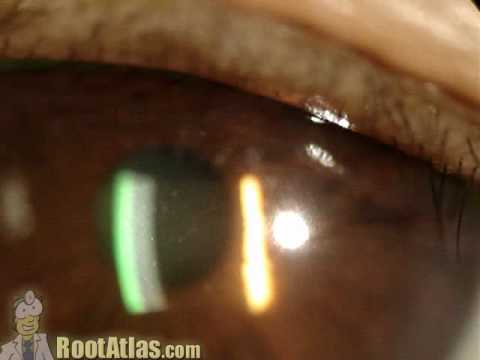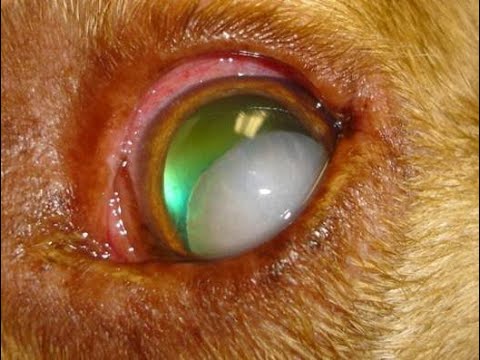The anterior chamber white flare in dogs is a concerning veterinary condition often indicative of deeper issues affecting the eye. This article dives into the potential causes and associated symptoms of this condition, equipping pet owners with the essential knowledge to recognize and respond to it. Understanding the nuances of anterior chamber white flare in dogs can make all the difference in ensuring that your furry friend receives the right care promptly.
## Anterior Chamber White Flare Dog: Causes and Symptoms
1. Uveitis
Uveitis is inflammation of the uveal tract, making it the most common reason behind anterior chamber white flare in dogs. It can stem from various infectious agents, immune-mediated diseases, or even trauma. Affected dogs might showcase signs like redness in the eye, squinting, or excessive tearing. If you notice these symptoms, a vet visit is crucial. Early detection can significantly improve treatment outcomes.
2. Lens-Induced Uveitis
When cataracts rupture, proteins from the lens leak into the eye, triggering inflammation. This condition leads to a noticeable white flare in the anterior chamber. Certain breeds, such as the Boxer and the Boston Terrier, are especially vulnerable to cataracts, making regular eye check-ups essential for early detection. Timely intervention can help manage this condition before it escalates.
3. Glaucoma
Glaucoma involves increased intraocular pressure, potentially damaging the optic nerve. Anterior chamber flare can signal secondary inflammation associated with this condition. Symptoms might include a bulging eye and signs of pain, such as increased sensitivity to touch. Breeds like the American Cocker Spaniel and the Basset Hound have a higher predisposition to glaucoma, highlighting the importance of vigilant monitoring.
4. Infectious Diseases
Various systemic infections – including Lyme disease and Rocky Mountain spotted fever – can lead to ocular symptoms, including anterior chamber flare. Dogs that frequently roam in tick-infested areas are particularly at risk. Paying attention to their health in endemic regions is critical since these diseases can snowball into more severe health issues if not diagnosed promptly.
5. Neoplasia
Tumors, whether within the eye or the surrounding tissues, can induce flare by causing inflammation or blocking normal fluid flow. Early diagnosis of tumors is vital, as they may present symptoms like unusual pupil size or changes in vision. If you notice any odd behavior or physical changes in your dog’s eyes, consult your veterinarian for a thorough examination.
6. Trauma or Foreign Bodies
Injuries to the eye can lead to anterior chamber flare. This can happen due to direct trauma from accidents, aggressive play, or foreign materials entering the eye. Immediate veterinary attention is vital if you suspect an eye injury. Prompt care can prevent painful complications and preserve eye health.
7. Toxic Exposure
Certain toxic substances can harm a dog’s eyes, often found in some insecticides or common plants. If you suspect that your furry friend has ingested anything toxic, do not waste a moment to seek veterinary assistance. Quick action can be the difference between minor irritation and severe health risks.

Recognizing Symptoms of Anterior Chamber White Flare in Dogs
Being aware of the symptoms associated with anterior chamber white flare can help in enhancing early detection:
Other Ocular Conditions to Differentiate
Besides anterior chamber white flare, several other ocular conditions can present similarly, highlighting the need for a vet’s evaluation. For example, conjunctivitis, corneal ulcers, or keratoconjunctivitis sicca (dry eye) may exhibit overlapping symptoms yet require distinct treatment approaches. Consulting a veterinarian ensures you’re on the right path in addressing your dog’s eye health.
Pet owners dedicated to their furry friends’ well-being should stay alert for any changes in their dogs’ eyes. Regular veterinary visits and awareness regarding anterior chamber white flare in dogs can aid in early intervention for potential health problems. By keeping a close watch on their pets’ ocular health, dog owners can create a nurturing environment that allows their companions to thrive, free from unnecessary discomfort or pain.
Taking care of your dog’s eye health is crucial, and vigilance can go a long way in maintaining their overall quality of life. Always prioritize their health, and when in doubt, consult your veterinarian. Remember, a well-cared-for pup is a happy pup!

Anterior Chamber White Flare Dog: Fun Facts and Trivia
Peeking into Canine Health
Did you know that dogs have some unique health indicators? One such indicator is the anterior chamber white flare dog condition. This occurs when there’s a protein leakage into the eye’s anterior chamber, often signaling inflammation or underlying health issues. Fascinatingly, just like a dog’s ears can feel warmer on a hot day, their eyes can express discomfort in equally telling ways. So, if you notice that your furry friend’s peepers aren’t looking quite right, it might be time to see a vet. Also, speaking of eye-catching conditions, let’s not forget how vibrant pets like the red minor tetra can be, making them delightful additions to any aquatic setup!
Conditions and Breeds to Watch
The anterior chamber white flare dog phenomenon can affect various breeds, including those with naturally delicate eye structures. For example, larger breeds, which are often the go-to for active families, might be more prone to certain eye problems. If you’re curious about the costs of adding a Doberman to your family, you might be surprised by how much they can fetch! The breed’s popularity means there’s often a premium on their price. But, keeping an eye on your dog’s health is just as crucial as knowing How much are Dobermans or any other beloved breed you might consider welcoming into your life.
The Quirky World of Pet Care
In the quirky world of pets, there are lots of surprising facts to discover! For instance, just like the unexpected charm of a Bichon Habanero, eye conditions can sometimes present in unexpected ways. And for those of you wondering about what it takes to decide on a new furry friend like a Russian Blue cat, it’s a classic case of doing your homework before making a lifelong commitment! Remember, pet care is an adventure, not just a responsibility—it’s a bit like settling into a cozy movie about Squatters figuring out their living situations! So keep an eye on your pooch’s health, and you’ll both enjoy all that life has in store.






